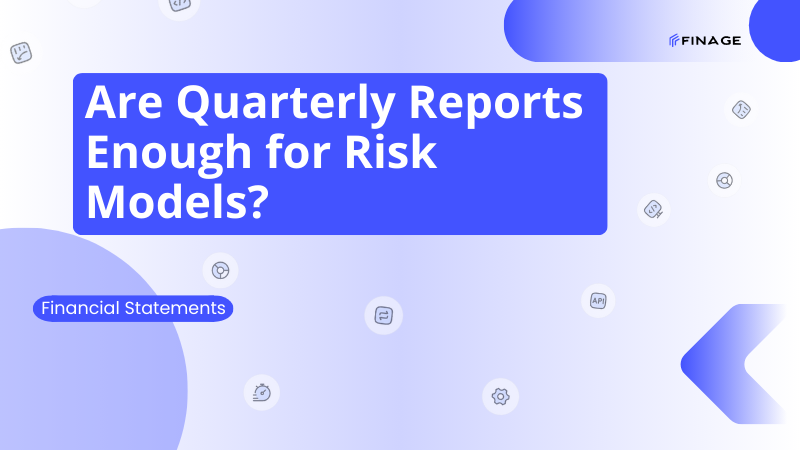How to Handle Data Bursts with WebSocket-Based Market Feeds
11 min read • June 6, 2025

Introduction
WebSockets are the backbone of real-time market data delivery — especially in trading platforms, crypto exchanges, and financial analytics dashboards. Unlike REST APIs, WebSockets provide a continuous stream of updates, making them ideal for fast-moving data environments.
But what happens when volatility spikes? When markets open? When major economic news hits?
That’s when data bursts occur — sudden surges in message volume that can overwhelm your system if it’s not properly designed. Handling these bursts isn’t just about speed — it’s about resilience, throughput management, and graceful degradation.
In this guide, we’ll explore how developers can build systems that thrive under high pressure — using buffering, throttling, and smart queueing techniques with WebSocket-based market feeds.
Table of Contents:
- Understanding Data Bursts in Market Data
- Why WebSockets Are Vulnerable to Volume Spikes
- Buffering: Your First Line of Defense
- Throttling Strategies to Avoid Overload
- Queue Management and Backpressure Handling
- Real-World Example with Finage WebSocket Feed
- Tips for Mobile and Embedded Applications
- Monitoring and Alerting for WebSocket Health
- Final Thoughts: Building Resilient WebSocket Pipelines with Finage
1. Understanding Data Bursts in Market Data
In financial systems, data doesn’t always flow at a steady pace. Instead, it often arrives in unpredictable spikes known as data bursts. These are periods when the number of updates per second surges — sometimes by 10x or more — due to sudden market events.
What Causes Data Bursts?
- Market Open/Close Events: Stock exchanges see massive trading activity within the first and last minutes of a trading session.
- Economic News Releases: CPI, NFP, interest rate decisions — all trigger rapid trading reactions across multiple markets.
- Crypto Volatility: Liquidations or whale movements in crypto often generate extreme bursts on DEX and CEX platforms.
- Flash Crashes or Breakouts: Sharp price moves in any asset cause every algorithm, bot, and investor to react simultaneously.
- Cross-Market Correlations: A sudden USD move can affect forex pairs, crypto valuations, and commodities — all at once.
What Do These Bursts Look Like?
Imagine a WebSocket feed that normally delivers 20 messages per second for BTC/USD. During a burst, that could surge to:
- 250+ price updates/second
- Thousands of order book changes
- Hundreds of OHLCV messages (especially if multiple intervals are subscribed)
These aren’t theoretical. This actually happens — and if you’re not prepared, you’ll start dropping data, freezing interfaces, or even crashing your backend.
2. Why WebSockets Are Vulnerable to Volume Spikes
WebSockets are designed for low-latency, real-time streaming — not for buffering or retrying. That makes them excellent for financial data, but also fragile under burst conditions unless they’re properly managed.
No Built-In Flow Control
Unlike some protocols that allow backpressure or adaptive flow control (like HTTP/2 or gRPC), standard WebSockets:
- Send data as fast as the server produces it
- Don’t pause when the client falls behind
- Lack retry mechanisms for dropped packets
- Cannot reorder messages — sequence matters, especially in trading
Message Queues Overflow
If your client or middleware can’t keep up with the flood of messages:
- Incoming buffers fill up
- WebSocket frame parsing slows down
- Latency increases
- Eventually, messages are dropped or the connection is closed
This is especially dangerous in systems where price accuracy or order book state must be preserved.
Frontend Rendering Delays
If you're using WebSockets to drive a frontend:
- A flood of updates can overload the browser’s event loop
- UI freezes or lags
- React/Vue components become unresponsive
- Mobile users may experience crashes or infinite loading states
Cloud Costs and Throttling
Some cloud functions (e.g., AWS Lambda, Firebase, edge workers) aren’t designed for bursty WebSocket flows, leading to:
- Unexpected CPU and bandwidth surges
-Auto-throttling or cold starts
- Increased billing due to over-consumption
3. Buffering: Your First Line of Defense
When facing sudden bursts in WebSocket-based market data feeds, buffering is the first and most effective safeguard. It helps prevent message loss and ensures your system can continue operating smoothly while catching up with the data stream.
What Is Buffering?
Buffering means temporarily storing incoming WebSocket messages in memory (or disk, if needed) before processing them. This creates a safety net between the ingestion rate (from the API) and the processing rate (in your app or service).
It’s like having a holding area for market data, so even if your processing lags behind for a few seconds, nothing gets lost.
How to Implement Buffering
There are different types of buffers depending on your architecture:
- In-memory queues: Perfect for high-speed apps with limited lag tolerance (e.g., Redis, circular queues).
- Stream processors: For larger systems, tools like Kafka or RabbitMQ can handle very large data bursts.
- Client-side buffering: If you're building a frontend, throttle rendering and buffer updates using techniques like requestAnimationFrame() batching or Web Worker queues.
When a market-moving event occurs, you might receive:
- Dozens of price messages per second for each channel
- Simultaneous OHLCV updates for every interval
- Depth-of-book messages if enabled
Here’s where buffering prevents:
- UI freeze on your dashboard
- Skipped updates in algorithmic logic
- Backend crashes due to overload
Tips for Efficient Buffering
- Use ring buffers for predictable memory usage
- Drop duplicate messages (e.g., unchanged prices)
- Prioritize the most critical data (e.g., last traded price over full order book)
- Log buffer depth and trigger alerts if it exceeds thresholds
4. Throttling Strategies to Avoid Overload
While buffering helps absorb temporary spikes, throttling actively controls how much data is processed — protecting both your app and the user experience. Throttling ensures your system never processes more than it can handle in real time.
What Is Throttling?
Throttling is the practice of limiting the rate at which messages are handled, rendered, or forwarded. Instead of processing every single WebSocket message immediately, you:
- Delay or skip some updates
- Prioritize only the latest or most critical data
- Aggregate similar messages together
It’s about quality over quantity, especially in frontends and visualization layers.
Types of Throttling
Here are key throttling techniques you can apply:
- Time-Based Throttling
Only process updates at fixed intervals (e.g., once every 500ms).
- Symbol-Specific Throttling
Apply lower update frequency for low-volume assets (e.g., filter DOGEUSD more than BTCUSD).
- Latest-Only Throttling
Keep only the most recent price or candle and discard outdated ones.
- Delta Filtering
Skip processing if the value hasn’t changed significantly (e.g., ignore price ticks < 0.001% movement).
Practical Example with Finage Streams
Let’s say your Finage WebSocket is delivering real-time trade ticks for HBARUSD:
{
"s": "HBARUSD",
"p": "0.06648169",
"q": "340082.47302549",
"t": 1680704234267
}
During a high-volatility window, hundreds of messages might flood in per second. You could:
- Throttle rendering to update UI every 1 second
- Use a Web Worker to handle raw feeds, and only pass “latest” data to the main thread
- Cache the top-of-book price, update only when changed
Server-Side vs Client-Side Throttling
- Server-side throttling (via backend middleware) protects infrastructure and databases.
- Client-side throttling ensures smoother UX for users and protects browser memory.
Both are essential for burst-resilient architecture.
5. Queue Management and Backpressure Handling
When buffering and throttling aren’t enough, queue management and backpressure become essential. These mechanisms allow your system to remain responsive and stable even when data bursts persist for longer durations.
What Is Backpressure?
Backpressure is a strategy where downstream systems signal to upstream systems to slow down or pause data delivery. In WebSocket-based market feeds, true backpressure isn’t supported at the protocol level, but you can simulate it within your architecture by managing internal queues intelligently.
Types of Queues
Here are the main queue types you can use:
- FIFO Queues: Maintain order and process one by one. Simple but may lag under volume.
- Priority Queues: Assign weights — e.g., large trades > small ones.
- Sliding Window Queues: Retain only the most recent N messages. Ideal for tickers or charts.
- Bounded Queues: Auto-drop oldest entries once capacity is exceeded.
Handling Queue Overflows
When queues overflow, you must decide what to discard, compress, or delay. Strategies include:
- Drop non-essential symbols temporarily
- Skip full order book rebuilds in favor of top-of-book updates
- Fallback to summary stats (e.g., VWAP, latest close) instead of raw ticks
This reduces system strain without degrading critical output.
Implementing Backpressure in Practice
Let’s say you use Finage WebSocket feeds in a backend that forwards updates to a UI:
- Ingest raw messages into a bounded queue (e.g., max 1000 updates).
- Periodically check the queue depth.
- If queue exceeds a critical threshold:
- Pause forwarding to clients
- Notify upstream modules (optional)
- Resume only when queue stabilizes
This dynamic control mechanism prevents system overload and allows graceful recovery under stress.
Monitoring Queues
Track:
- Queue depth over time
- Message processing latency
- Dropped or discarded message counts
- Symbol-level congestion
These metrics help optimize throughput — and serve as early warnings for system strain.
6. Real-World Example with Finage WebSocket Feed
To understand how to handle data bursts effectively, let’s simulate a real-world usage scenario using the Finage WebSocket API.
Imagine you're building a trading dashboard that streams live price updates for forex, crypto, and stock symbols. You want the app to stay fast and responsive — even when markets spike.
During calm hours, you may receive:
-10–15 updates/sec per symbol
-Steady OHLCV ticks and small trade events
But during a market event (e.g., Fed rate decision), this can jump to 200+ updates/sec, especially for crypto.
Buffer + Throttle + Prioritize
- Buffer: Message queue stores a rolling window of updates
- Throttle: Only push latest update to frontend every 1 second
- Prioritize: Focus on symbols with highest volume or volatility
If queue size consistently exceeds 900+, trigger alerts or pause subscriptions to less important channels.
Finage’s feed architecture is optimized for high-throughput environments, but the final responsibility lies with your system design. This setup ensures you can handle fast-moving data without bottlenecks.
7. Tips for Mobile and Embedded Applications
Handling WebSocket data bursts is even more challenging when working with mobile devices, tablets, or embedded fintech tools like smartwatches or point-of-sale systems. These environments often lack the CPU, memory, or network stability of desktops and cloud servers.
To make sure your app works smoothly under pressure, you need extra optimization.
Reduce Symbol Subscriptions
Mobile apps should subscribe to fewer symbols at once. Instead of loading the full market, allow users to:
- Favorite assets
- View only a specific watchlist
- Manually toggle live mode on/off per tab
This limits the chance of being overwhelmed during data surges.
Use Lightweight Rendering
Avoid high-frequency DOM updates or React state changes per tick. Instead:
- Buffer and throttle updates (every 1–2 seconds max)
- Use requestAnimationFrame() or Web Workers
- Offload rendering for graphs/candles with GPU-accelerated libraries like Pixi.js or D3
Optimize for Battery & Network
Mobile users suffer from:
- Spotty Wi-Fi or mobile network drops
- Throttled CPU/GPU under power-saving modes
- Limited RAM (especially on older Android/iOS devices)
To avoid crashes or burnouts:
- Auto-pause WebSocket when app is backgrounded
- Use smaller data payloads (e.g., top-of-book instead of full depth)
-Use gzip-compressed WebSocket feeds if supported
- Avoid memory leaks — especially in charting libraries
Finage Feed Adaptability
Finage’s feeds are ideal for mobile because they support:
- Real-time per-symbol subscription control
- Lightweight JSON messages
- Throttle-friendly WebSocket delivery
- Geographic proximity (edge servers) for reduced mobile latency
This lets you dynamically control bandwidth and system load on the fly — perfect for mobile UX.
8. Monitoring and Alerting for WebSocket Health
Handling data bursts effectively doesn’t stop with buffering and throttling — you need active monitoring to detect overload, connection issues, or performance degradation in real time. Without visibility, you’ll miss early warning signs of system failure.
What to Monitor in WebSocket Systems
Here are the most critical metrics for burst resilience:
- Message Throughput: Messages received per second, per symbol
- Queue Depth: Size of internal processing queues or buffers
- Processing Lag: Time delay between receiving and handling a message
- Dropped Messages: Number of skipped or discarded updates
- Connection Status: Uptime, reconnection events, handshake failures
- Latency Between Ticks: Time difference between sequential price updates
- Memory Usage: Increases can indicate leaks or overload during spikes
How to Set Up Alerts
Use tools like Prometheus, Grafana, or New Relic to set thresholds such as:
- If queue depth > 800 for 10 seconds → Alert: "Message Backlog Growing"
- If tick processing delay > 500ms → Warning: "UI Might Lag"
- If reconnections > 5 per minute → Critical: "WebSocket Instability"
- If no messages received for 30 seconds → Alert: "Feed Disruption"
Even simple console.warn() or Slack webhook alerts are better than silent failure.
Logging for Diagnosis
When bursts happen, logs are your first line of forensic defense. Capture:
- Timestamps and symbols of all messages
- Actions like subscriptions/unsubscriptions
- System state snapshots during peak load
- Errors during JSON parsing or message routing
Finage Recommendations
Finage WebSocket feeds are designed for stability under high load, but they still depend on:
- Client-side logic to handle bursts gracefully
- Mid-tier services to absorb and queue messages
- Monitoring dashboards to keep ops teams informed
If you're building a production-grade platform, real-time telemetry isn’t optional — it’s critical to uptime and user trust.
9. Final Thoughts: Building Resilient WebSocket Pipelines with Finage
Data bursts are inevitable in modern financial systems — especially when you're streaming real-time market data across stocks, forex, crypto, and indices. They test the limits of your infrastructure, from frontend rendering to backend processing.
WebSocket feeds, while powerful, are not burst-proof by default. They require:
- Careful buffering to prevent message loss
- Strategic throttling to preserve UI and app performance
- Smart queueing to prioritize what matters
- Ongoing monitoring to prevent silent failures
That’s where Finage makes a difference.
Whether you're building a high-frequency crypto app, a professional trading terminal, or an on-chain analytics dashboard, Finage WebSocket APIs offer:
- Fast, stable streaming for stocks, forex, crypto, and more
- Simple subscription/unsubscription commands for burst control
- Lightweight message formats ideal for mobile and embedded systems
- Developer-first documentation and real-time support
With Finage, you’re not just getting raw data — you're getting the tools to handle that data at scale, under pressure, and in real time.
You can get your Real-Time and Historical Market Data with a free API key.
Build with us today!
Claim Your Free API Key Today
Access stock, forex and crypto market data with a free API key—no credit card required.

Stay Informed, Stay Ahead
Finage Blog: Data-Driven Insights & Ideas
Discover company news, announcements, updates, guides and more


